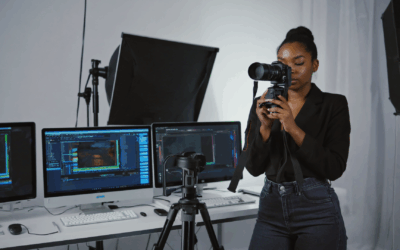Understanding Depth of Field in Macro Photography: A Comprehensive Guide
Introduction to Macro Photography
What is Macro Photography?
Macro photography is a specialised genre that reveals the hidden details of small subjects—flowers, insects, textures and everyday objects—by shooting at life-size or greater magnification. It uncovers intricate patterns and structures that often go unnoticed by the naked eye.
Common subjects include:
- Insects (bees, butterflies, spiders)
- Flowers and plants
- Textures (wood, stone, fabric)
- Everyday objects (jewellery, coins, food)
The Importance of Lighting in Macro Photography
Proper lighting is crucial to highlight fine details and textures:
- Natural Light: Soft, diffused sunlight at dawn or dusk works beautifully—see our Golden Hour Lighting Guide.
- Flash: A ring or twin-flash can eliminate shadows, but beware harsh contrasts.
- Reflectors & Diffusers: Balance and soften light—learn more in this Cambridge in Colour tutorial.
Understanding Depth of Field in Macro Photography
What is Depth of Field?
Depth of field (DoF) is the zone of acceptable sharpness in front of and behind your focus point. In macro work, DoF is often extremely shallow—mere millimetres—so precise control is essential.
Importance of Depth of Field in Macro
Shallow DoF can isolate your subject against a creamy background, while greater DoF reveals more detail. Choose your DoF based on the story you wish to tell.
Factors Influencing Depth of Field
Aperture Settings and Their Impact
Your aperture (f-stop) directly controls DoF:
- Wide Aperture (f/2.8–f/5.6): Very shallow DoF—perfect for dreamy separation.
- Narrow Aperture (f/8–f/16): Deeper DoF—captures more detail, though watch for diffraction.
For diffraction limits at small apertures, see this DPReview guide.
Distance from the Subject and Its Role
The closer you are, the shallower the DoF. Even small changes in distance produce dramatic DoF shifts at high magnification.
Macro Photography Aperture Settings
Understanding Aperture
Aperture size dictates light and DoF. Balance your f-stop selection with lighting and desired sharpness.
Recommended Settings
- Isolated Subjects: f/2.8–f/5.6 for creamy bokeh.
- Greater Detail: f/8–f/16—use a tripod and low ISO.
- Low Light: Wide apertures with high-speed flashes or LED rings.
Lens Selection for Macro Photography
Types of Lenses
- Dedicated Macro Lenses (1:1 magnification)
- Extension Tubes & Close-up Filters for non-macro lenses
Prime vs Zoom Macro Lenses
Prime Lenses offer wider maximum apertures and sharper optics; Zoom Lenses add framing flexibility but usually slower apertures.
Key Features
- 1:1 or greater magnification ratio
- Image stabilisation for handheld work
- Minimum focus distance
Macro Photography Techniques
Essential Techniques
- Focus Stacking: Merge multiple focus-point images—see our Focus Stacking Tutorial.
- Tripod Use: A sturdy tripod and remote release ensure maximum sharpness.
Creative Techniques
- Use natural backgrounds and small props for context.
- Experiment with low angles and unconventional perspectives.
Focus Techniques in Macro Photography
Manual vs Autofocus
Manual focus gives you pinpoint control at high magnification; autofocus can hunt—use it judiciously.
Advanced Focus Techniques
- Focus Bracketing: Automate bracketed focus sequences.
- Depth of Field Preview: Use your camera’s DoF preview button to preview blur zones.
Conclusion
Mastering depth of field in macro photography unlocks astonishing detail and creativity. By experimenting with aperture, distance, lenses and focus techniques like stacking, you’ll capture images that reveal the hidden beauty of the miniature world. Happy shooting!
Frequently Asked Questions
Q: What aperture should I use for macro portraits?
A: For strong background blur, try f/2.8–f/5.6; for more overall sharpness, use f/8–f/11.
Q: How do I avoid diffraction at small apertures?
A: Stay above f/16 on most sensors—use focus stacking if greater DoF is needed.
Q: Is focus stacking difficult to learn?
A: Start with 5–7 bracketed shots at different focus points and merge in software like Helicon Focus or Photoshop.
Q: Can I hand-hold macro shots?
A: Yes, with lenses that feature image stabilisation and fast shutter speeds—though a tripod remains best for ultimate sharpness.




0 Comments